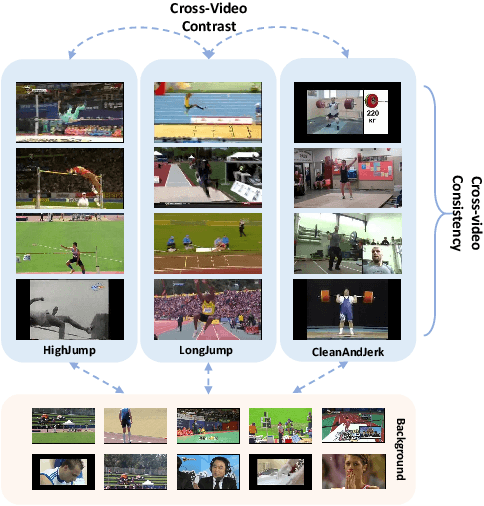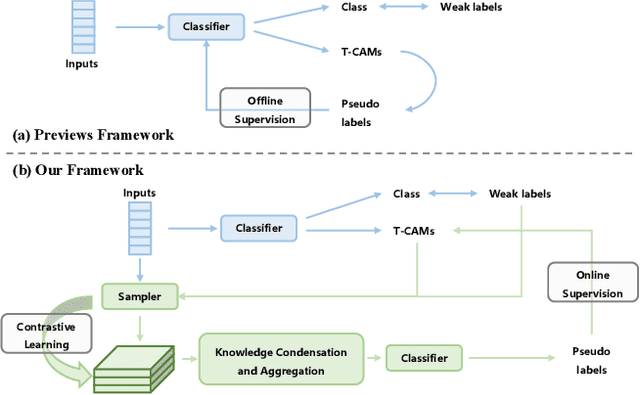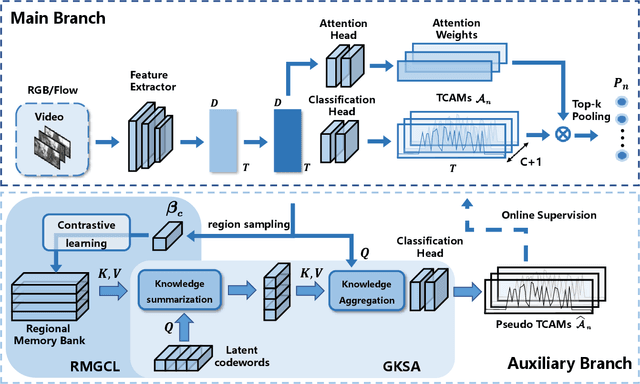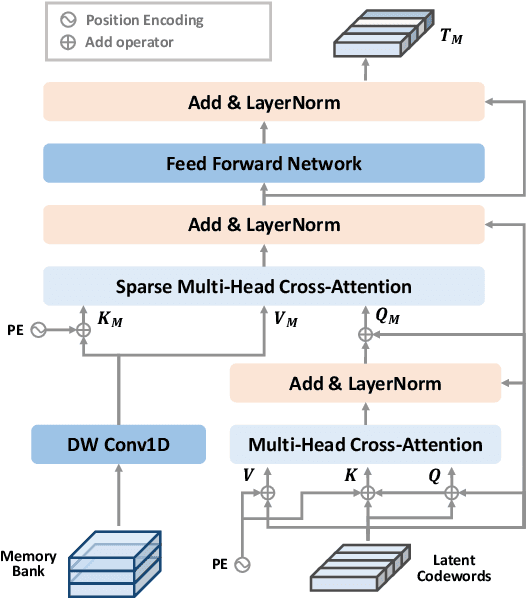Songchun Zhang
SpatialCrafter: Unleashing the Imagination of Video Diffusion Models for Scene Reconstruction from Limited Observations
May 17, 2025Abstract:Novel view synthesis (NVS) boosts immersive experiences in computer vision and graphics. Existing techniques, though progressed, rely on dense multi-view observations, restricting their application. This work takes on the challenge of reconstructing photorealistic 3D scenes from sparse or single-view inputs. We introduce SpatialCrafter, a framework that leverages the rich knowledge in video diffusion models to generate plausible additional observations, thereby alleviating reconstruction ambiguity. Through a trainable camera encoder and an epipolar attention mechanism for explicit geometric constraints, we achieve precise camera control and 3D consistency, further reinforced by a unified scale estimation strategy to handle scale discrepancies across datasets. Furthermore, by integrating monocular depth priors with semantic features in the video latent space, our framework directly regresses 3D Gaussian primitives and efficiently processes long-sequence features using a hybrid network structure. Extensive experiments show our method enhances sparse view reconstruction and restores the realistic appearance of 3D scenes.
Pragmatist: Multiview Conditional Diffusion Models for High-Fidelity 3D Reconstruction from Unposed Sparse Views
Dec 12, 2024Abstract:Inferring 3D structures from sparse, unposed observations is challenging due to its unconstrained nature. Recent methods propose to predict implicit representations directly from unposed inputs in a data-driven manner, achieving promising results. However, these methods do not utilize geometric priors and cannot hallucinate the appearance of unseen regions, thus making it challenging to reconstruct fine geometric and textural details. To tackle this challenge, our key idea is to reformulate this ill-posed problem as conditional novel view synthesis, aiming to generate complete observations from limited input views to facilitate reconstruction. With complete observations, the poses of the input views can be easily recovered and further used to optimize the reconstructed object. To this end, we propose a novel pipeline Pragmatist. First, we generate a complete observation of the object via a multiview conditional diffusion model. Then, we use a feed-forward large reconstruction model to obtain the reconstructed mesh. To further improve the reconstruction quality, we recover the poses of input views by inverting the obtained 3D representations and further optimize the texture using detailed input views. Unlike previous approaches, our pipeline improves reconstruction by efficiently leveraging unposed inputs and generative priors, circumventing the direct resolution of highly ill-posed problems. Extensive experiments show that our approach achieves promising performance in several benchmarks.
Cross-Video Contextual Knowledge Exploration and Exploitation for Ambiguity Reduction in Weakly Supervised Temporal Action Localization
Aug 24, 2023



Abstract:Weakly supervised temporal action localization (WSTAL) aims to localize actions in untrimmed videos using video-level labels. Despite recent advances, existing approaches mainly follow a localization-by-classification pipeline, generally processing each segment individually, thereby exploiting only limited contextual information. As a result, the model will lack a comprehensive understanding (e.g. appearance and temporal structure) of various action patterns, leading to ambiguity in classification learning and temporal localization. Our work addresses this from a novel perspective, by exploring and exploiting the cross-video contextual knowledge within the dataset to recover the dataset-level semantic structure of action instances via weak labels only, thereby indirectly improving the holistic understanding of fine-grained action patterns and alleviating the aforementioned ambiguities. Specifically, an end-to-end framework is proposed, including a Robust Memory-Guided Contrastive Learning (RMGCL) module and a Global Knowledge Summarization and Aggregation (GKSA) module. First, the RMGCL module explores the contrast and consistency of cross-video action features, assisting in learning more structured and compact embedding space, thus reducing ambiguity in classification learning. Further, the GKSA module is used to efficiently summarize and propagate the cross-video representative action knowledge in a learnable manner to promote holistic action patterns understanding, which in turn allows the generation of high-confidence pseudo-labels for self-learning, thus alleviating ambiguity in temporal localization. Extensive experiments on THUMOS14, ActivityNet1.3, and FineAction demonstrate that our method outperforms the state-of-the-art methods, and can be easily plugged into other WSTAL methods.
Dyna-DepthFormer: Multi-frame Transformer for Self-Supervised Depth Estimation in Dynamic Scenes
Jan 14, 2023Abstract:Self-supervised methods have showed promising results on depth estimation task. However, previous methods estimate the target depth map and camera ego-motion simultaneously, underusing multi-frame correlation information and ignoring the motion of dynamic objects. In this paper, we propose a novel Dyna-Depthformer framework, which predicts scene depth and 3D motion field jointly and aggregates multi-frame information with transformer. Our contributions are two-fold. First, we leverage multi-view correlation through a series of self- and cross-attention layers in order to obtain enhanced depth feature representation. Specifically, we use the perspective transformation to acquire the initial reference point, and use deformable attention to reduce the computational cost. Second, we propose a warping-based Motion Network to estimate the motion field of dynamic objects without using semantic prior. To improve the motion field predictions, we propose an iterative optimization strategy, together with a sparsity-regularized loss. The entire pipeline achieves end-to-end self-supervised training by constructing a minimum reprojection loss. Extensive experiments on the KITTI and Cityscapes benchmarks demonstrate the effectiveness of our method and show that our method outperforms state-of-the-art algorithms.
 Add to Chrome
Add to Chrome Add to Firefox
Add to Firefox Add to Edge
Add to Edge